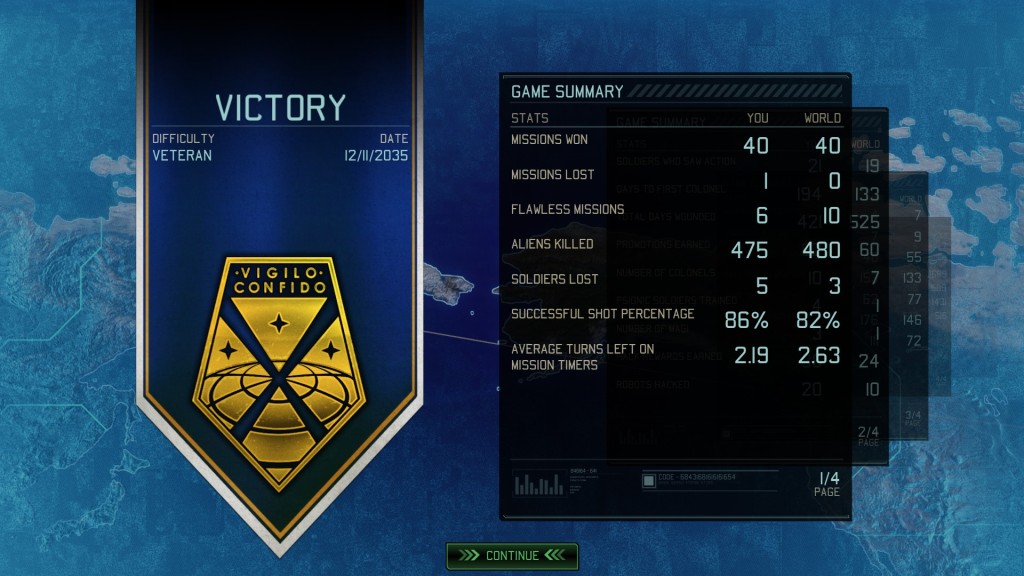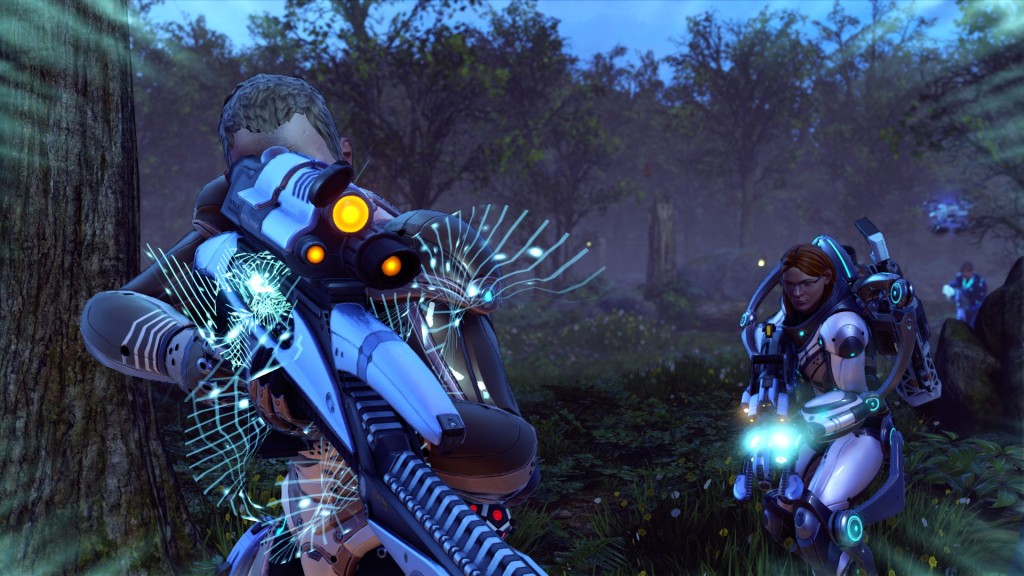- XCOM: Enemy Unknown — Demo impressions
- Who wants a walk-on role in my XCOM: Enemy Unknown squad?
- Let’s Play XCOM: Enemy Unknown! Part 1: Baby Steps
- Let’s Play XCOM: Enemy Unknown! Part 2: Winning battles, whither the war?
- Let’s Play XCOM: Enemy Unknown! Part 3: Terror and Triumph
- Let’s Play XCOM: Enemy Unknown! Part 4: The Turning of the Tide
- Let’s Play XCOM: Enemy Unknown! Part 5: Pride Goeth Before a Fall
- Let’s Play XCOM: Enemy Unknown! Part 6: SHIVs, Stopgaps and Archangels
- Let’s Play XCOM: Enemy Unknown! Part 7 (FINAL): Avenger
- XCOM: Enemy Unknown – The Verdict
- XCOM2 first impressions: Good luck, Commander. You’ll need it!
- Thoughts on XCOM 2
 Worthy successor. XCOM 2 is game of the year material for me, building on what worked in XCOM: Enemy Unknown and Enemy Within. I look forward to what Jake Solomon and team do next!
Worthy successor. XCOM 2 is game of the year material for me, building on what worked in XCOM: Enemy Unknown and Enemy Within. I look forward to what Jake Solomon and team do next!
More detailed thoughts below:
– This is how to balance a single-player game — “give the player interesting decisions” means “give the player an impressive choice of tools” 1 The punishing early game teaches several lessons: Protracted shootouts are dangerous. Guaranteed damage is better than relying on the odds. Stack the odds wherever possible. By the mid-game, we’ve unlocked enough abilities to put those lessons into practice. Every XCOM 2 class can do something cool: rangers can stealthily scout, sharpshooters can engage multiple targets on overwatch, grenadiers can choose between high single-target damage or area-wide de-buffs & damage over time, specialists can heal from a distance or inflict guaranteed damage, and psionics can do most of the above. (While XCOM: Enemy Unknown and Enemy Within also had plenty of impressive tools — snipers in Archangel armour, run-and-gun plus rapid fire, using Mimetic Skin to sneak heavies in range for an explosive barrage — I feel XCOM 2 does a better job of making every class feel powerful, with psionics the big winner.) Balance is driven by limitations on what the player can deploy, not by making the player feel weak.
– Successful fusion of strategy and RPG. At a tactical level, the Firaxis XCOM games revolve around choosing one’s favourite tools (equipment and especially character abilities), understanding how they interact, and applying that knowledge to solve individual problems — a description that could also apply to a well-designed party RPG. In turn, those problems involve multiple dimensions, such as the number and type of enemies, terrain, positioning, the mission timer, and the resources already expended (health and consumables, plus any abilities on cooldown) — factors usually associated with the strategy genre. That interplay gives these games their richness.
– Music the biggest let-down. I like XCOM 2’s visuals — the architecture of the new human/alien civilisation is surprisingly lovely, masking the iron fist beneath. The ADVENT soldiers’ big, imperious arm gestures cement them as pulp baddies. XCOM operatives’ animations are as satisfying as ever, from shimmying down drainpipes to whipping out pistols, and late-game equipment looks fantastic. Set against this, the music is merely decent — a big step down from the great soundtrack of XCOM: Enemy Unknown.
- Contrast Civilization: Beyond Earth, which gave the player underwhelming choices instead. ↩
Discover more from Matchsticks for my Eyes
Subscribe to get the latest posts sent to your email.

The biggest appeal for me with XCom 2 was the notion of playing a resistance force. There is a better, I suppose, suspension of belief as a result of playing this small partisan force, scraping by with whatever resources a person can obtain, trying to stay under the alien’s radar. It didn’t work as well I thought with XCom 1, a small force didn’t make any sense when trying to save the world, with international support.
I do like the timed missions. They push me forward, ever forward. But it fails in the sense that one bad mission can be the end of the game. What Firaxis need to do I believe is push for some kind of come back mechanic on the side of the humans. What I would like to see also is a change in the way missions are done, it shouldn’t always be a reflection of where the aliens are at, allow a few easy missions to sneak in so that rookies can have a go. I suppose this does possibly make way for a longer game, or a less dangerous game. But the roster of aliens does get a little boring at the end. It was like the Muton beserkers appear, then they are gone in a flash.
The resistance force thing is a really interesting point – arguably XCOM 2 could have taken it further. For example, 99% of missions are giant shootouts that lay waste to entire city blocks – it might have been interesting to see more missions like the broadcast tower (small, stealthy squad with the ability to unlock bonuses by spending Intel). I also wonder if a more dynamic strategic level (perhaps a reverse Panic meter, with XCOM inspiring regions to throw off ADVENT occupation?) might have been a better fit for the theme. Allowing the player to seek out easy missions might also address your point about the difficulty of training rookies in the late game.
I think comeback mechanics are one of the biggest differences between Gollop X-COM and Firaxis XCOM. In Gollop X-COM, individual soldiers, even veterans, were much more expendable. In Firaxis XCOM, losing too many veterans will put the player in a death spiral (depleted squad -> can’t win missions -> can’t obtain rewards -> squad stays weak -> repeat). Being able to buy veterans in XCOM 2 is helpful, but only goes so far. Mind you, it was also much easier to abuse the strategic layer in Gollop X-COM by selling laser cannons…